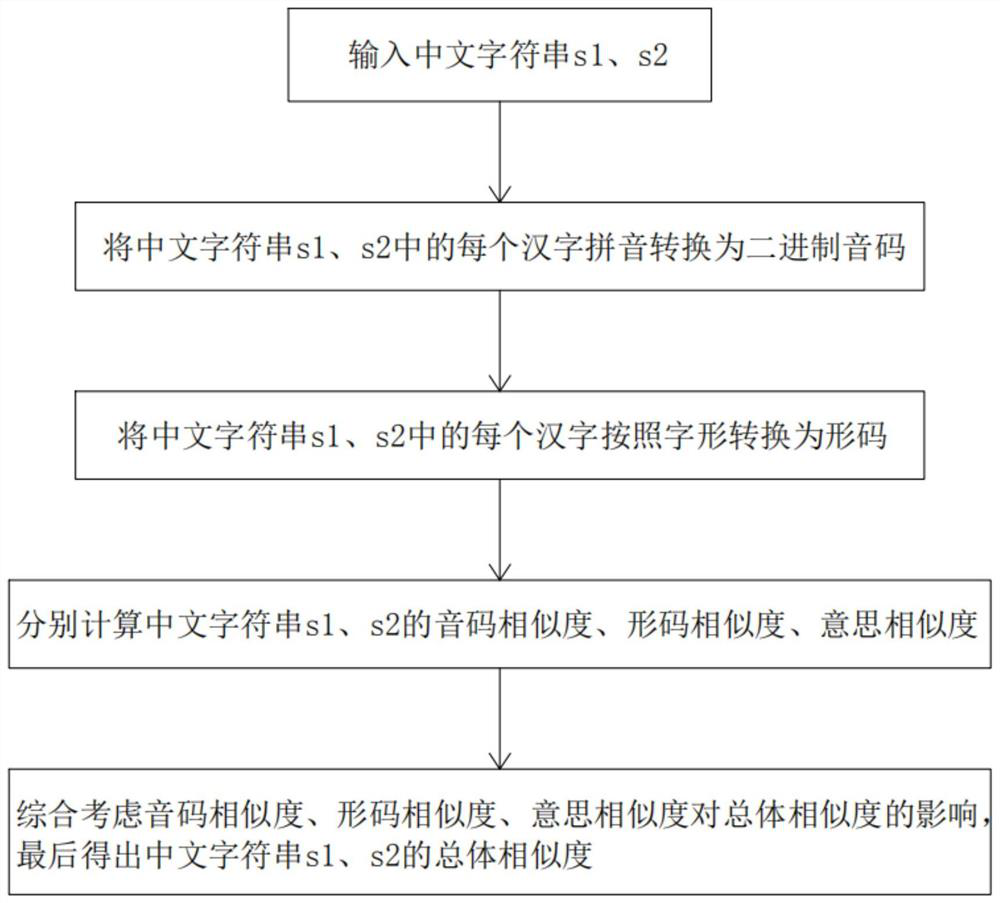Chinese word similarity detection algorithm based on pronunciation, shape and meaning
A detection algorithm and similarity technology, which is applied in computing, other database retrieval, instruments, etc., can solve the problems that the similarity of words with hidden typos cannot be detected, and the length of Chinese character strings cannot be recognized.
- Summary
- Abstract
- Description
- Claims
- Application Information
AI Technical Summary
Problems solved by technology
Method used
Image
Examples
Embodiment Construction
[0075] In order to better understand the technical contents of the present invention, specific embodiments are provided below, and in conjunction with the accompanying drawings, the present invention is further described:
[0076] see figure 1 , the present invention provides a Chinese word similarity detection algorithm based on sound, form and meaning, which combines the three major features of sound, form and meaning of Chinese characters to perform similarity detection on Chinese character strings, comprising the following steps:
[0077] Step S1: converting each Chinese character pinyin in the input Chinese character strings s1 and s2 into a binary phonetic code;
[0078] Step S2: each Chinese character in the Chinese character string s1 of input, s2 is converted into font code according to font;
[0079] Step S3: calculate the phonetic code similarity, font code similarity, meaning similarity of Chinese character string s1, s2 respectively;
[0080] Step S4: consider t...
PUM
 Login to View More
Login to View More Abstract
Description
Claims
Application Information
 Login to View More
Login to View More - R&D
- Intellectual Property
- Life Sciences
- Materials
- Tech Scout
- Unparalleled Data Quality
- Higher Quality Content
- 60% Fewer Hallucinations
Browse by: Latest US Patents, China's latest patents, Technical Efficacy Thesaurus, Application Domain, Technology Topic, Popular Technical Reports.
© 2025 PatSnap. All rights reserved.Legal|Privacy policy|Modern Slavery Act Transparency Statement|Sitemap|About US| Contact US: help@patsnap.com



